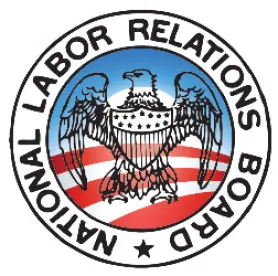As we have often discussed, there is a fine line between protected and unprotected activity. Profane outbursts, deliberate misconduct, or highly-disruptive strikes may fall outside the protection of the NLRA, subjecting employees to lawful disciplinary action by their employers.
On December 7, 2020, the Board reaffirmed its prior decisions holding that an employer’s discharge of an employee engaged in protected activity may not be justified solely by its subjective belief that the employee misbehaved. Rather, the employer must demonstrate that the purported misconduct actually occurred to implement discipline. This determination may be quite challenging in light of conflicting employee statements and prolonged, hotly-disputed factual contexts. However, as this decision illustrates, an employer’s failure to reach the “correct” conclusion may lead to liability under the NLRA.
Background
In Nestlé USA, Inc., 370 NLRB No. 53 (2020), an employee and several co-workers submitted a signed petition to their employer complaining of verbal abuse and violations of internal safety protocols by a supervisor. The employer conducted an extensive investigation, and interviewed the complaining employee, his coworkers, and the accused supervisor. At the last minute, the employee added that he was told by another co-worker about an incident in which the co-worker overhead the supervisor referring to three black employees as “monkeys” after they had trouble on the assembly line. The employer determined that the allegations against the supervisor were valid, but did not address the allegedly racist comment. The supervisor was given a verbal warning and a 1-2 week suspension.
Dissatisfied with the company’s response, the employee met with the plant manager to reiterate his complaint regarding the allegedly-racist comment, causing the investigation to be reopened. During the renewed investigation, the employee made several verbal and written statements to the company, including:
-
that he had informed the black co-worker who was purportedly the subject of the supervisor’s racist comment and the co-worker expressed support for his complaint against the supervisor;
-
that another co-worker was made “uncomfortable” by the racist conduct of another, different supervisor; and
-
repeatedly expressing that he and his co-workers were unhappy with the employer’s response and wanted the supervisor to be removed.
In subsequent interviews, the employee was evasive about his conversations with his black co-worker and refused to answer several questions, and the employer received statements by the employee’s co-workers indicating that the employee’s complaints about the supervisor were motivated, at least partially, by a desire to take over the supervisor’s position.
Frustrated by the employee’s conduct, the employer first suspended him to prevent further interference with their investigation, and then terminated him for his dishonesty and refusal to cooperate with the investigation.
The Employee Engaged in Protected Activity
The ALJ determined that the employee clearly had engaged in protected concerted activity by submitting a complaint regarding the supervisor and found that his subsequent efforts were a logical continuation of that earlier activity. The ALJ noted that the employee’s purported subjective reason for engaging in conduct— even if it was a selfish attempt to assume his supervisor’s position— was irrelevant to the question of whether his conduct was protected. What mattered was that the employee served as a spokesperson for his co-workers’ complaints about the supervisor and that he sought to improve his co-workers’ working conditions.
The Employee Did Not Forfeit the Protections of the Act
The employer argued that even if the employee engaged in protected activity, his dishonesty during interviews by the employer forfeited the Act’s protections. Specifically, the employer argued that the employee instigated his black co-worker to complain regarding the supervisor’s racist comment, even though neither the co-worker nor the employee had heard the comment firsthand.
Despite this complex factual record, which included multiple, often-contradictory statements by employees and numerous interviews, the ALJ ultimately determined that the employee had not acted dishonestly by reporting his black co-worker’s support of his complaint or repeating his other co-worker’s allegations about a different supervisor.
As a result, the ALJ found that there was no underlying misconduct which the employer could use to justify its disciplinary action. The Board affirmed, citing NLRB v. Burnup & Sims, Inc., 379 U.S. 21 (1964) for its holding that an employee’s discharge for misconduct during protected activity is justified only if the employee is “in fact, guilty of that misconduct”.
The Employee’s Conduct Outside of Protected Activity Did Not Justify His Termination
Alternatively, the employer argued that it fired the employee not due to his misconduct while engaged in protected activity, but due to his misconduct outside of protected activity. Specifically, the employer claimed that during later interviews in the course of the investigation, the employee falsely attributed comments to his black co-worker and refused to cooperate by answering the employer’s questions. The Board found that the ALJ properly analyzed the company’s claim through the burden-shifting causation framework of Wright Line (251 NLRB 1083 (1980)), which evaluates whether an adverse action taken against an employee was motivated by protected activity or by a legitimate lawful reason.
The Board affirmed the ALJ’s finding that the General Counsel had satisfied its initial burden of showing that the employee engaged in protected concerted activity, which the employer knew of and that the employer demonstrated animus towards the protected activity. The Board also agreed that the employer had not met its burden to prove it would have discharged the employee absent his protected conduct.
The Board pointed to the ALJ’s earlier finding that the employee had not acted dishonestly to refute the employer’s claim that the employee falsely attributed comments to his black coworker. As to the second rationale, the Board found the employer failed to provide evidence that it had a history of discharging employees based on their refusal to cooperate in internal investigations, and did not discipline two of his co-workers, who had refused to provide written statements. Thus, the Board affirmed the ALJ’s conclusion that under Wright Line, the employer violated Section 8(a)(1) and interfered with the employee’s exercise of his rights under the Act.
Takeaways
Investigations into complaints protected by the Act often face complications due to how employees respond to questions which can fall along a spectrum from complete candor, to exaggeration, to evasion, and sometimes dishonesty by the employee. This case is a reminder that often there is substantial overlap between what might be considered misconduct and what is protected activity, particularly where the factual record is complicated and hotly disputed. It is often hard to extricate the two. In other words, it is just plain risky to discipline or discharge an employee who may be engaging in misconduct during the course of a protected activity.
An employee’s reasons for engaging in workplace advocacy or other protected conducted—however arguably self-motivated—are immaterial to the objective determination of whether the conduct warrants protection under Section 7 of the Act. Employers faced with similar situations should carefully review how they have responded to similar conduct by other employees before taking disciplinary action. In this case, it was difficult to argue the misconduct warranted termination when there were other employees who received only a written warning.





 />i
/>i

